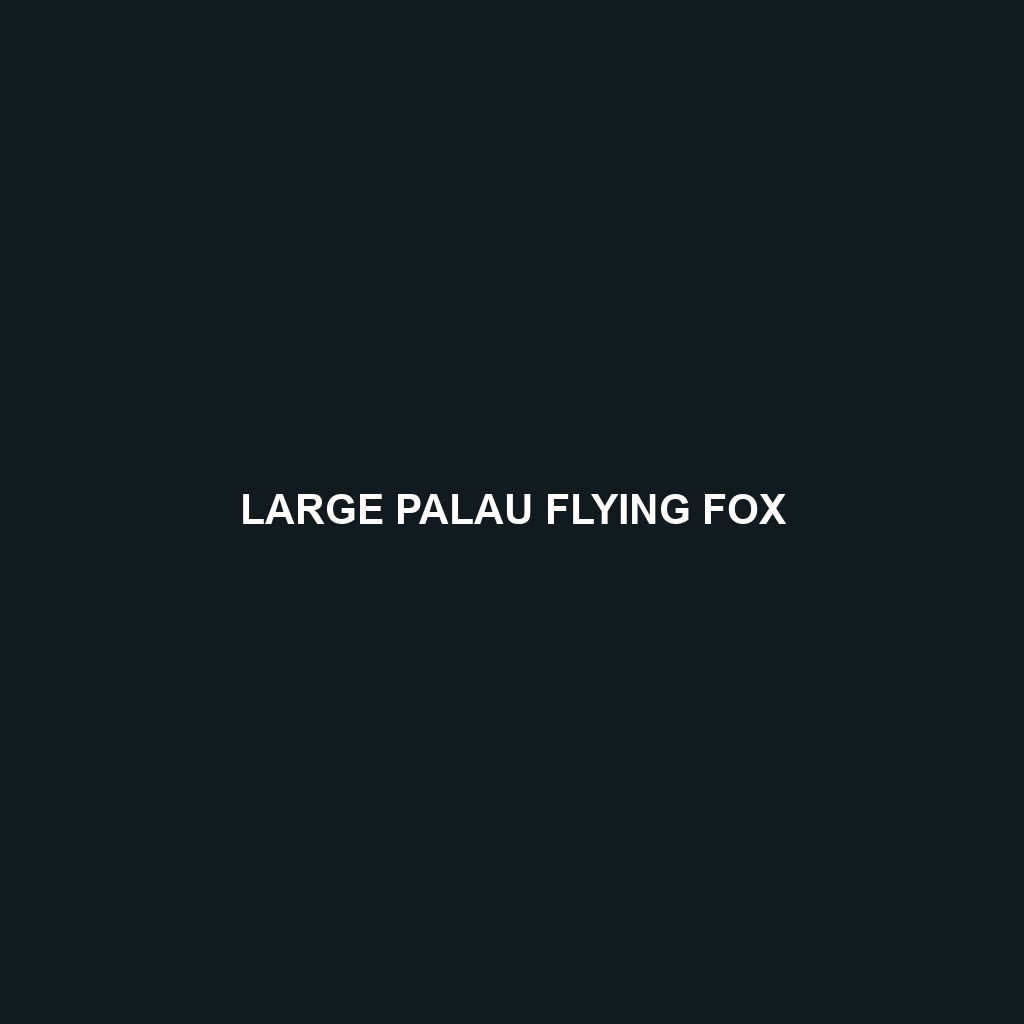Large Palau Flying Fox
Common Name: Large Palau Flying Fox
Scientific Name: Pteropus mariannus
Habitat
The Large Palau Flying Fox, native to the Palau archipelago in the western Pacific Ocean, primarily inhabits tropical and subtropical forests. These bats are commonly found in lush, dense forested areas, often near fruiting trees, which are crucial for their feeding habits. They prefer habitats that provide ample food sources and roosting sites, such as mangroves, coastal forests, and areas with abundant mature trees.
Physical Characteristics
The Large Palau Flying Fox is notable for its considerable size, with a wingspan reaching up to 1.2 meters (4 feet) and a body length of approximately 30 to 40 centimeters (12 to 16 inches). Its fur is primarily dark brown or black with lighter-colored patches on the face and wings, making it distinctively attractive. The unique fox-like face and large eyes add to its distinguishing features, contributing to its popularity among wildlife enthusiasts.
Behavior
This species exhibits crepuscular activity, meaning they are most active during dawn and dusk. Large Palau Flying Foxes are highly social mammals, often roosting in large colonies of up to several hundred individuals. They are known for their strong homing abilities and typically return to the same roosts each night. Their social interactions also include vocalizations that can be heard during their nightly foraging flights.
Diet
The diet of the Large Palau Flying Fox mainly consists of fruits, nectar, and flowers, with a preference for figs, mangoes, and papayas. This bat plays a crucial role as a pollinator and seed disperser, which helps maintain the health of the forest ecosystem. Their feeding habits not only influence their own survival but also support the growth of various plant species in their habitat.
Reproduction
Breeding typically occurs once a year, with a gestation period of approximately 5 months. Females usually give birth to a single pup, which they nurse and care for until it is capable of flight. The breeding season coincides with the availability of fruiting trees, providing the necessary nutrients for both mothers and their young. Offspring often stay with their mothers for extended periods, learning vital skills for survival.
Conservation Status
The Large Palau Flying Fox is currently listed as vulnerable on the IUCN Red List. Habitat loss due to deforestation and hunting poses significant threats to its population. Conservation efforts are focused on habitat preservation and establishing protected areas to ensure the survival of this unique species.
Interesting Facts
One fascinating aspect of the Large Palau Flying Fox is its exceptional sense of smell, which it uses to locate ripe fruits from great distances. Additionally, they are known to have a lifespan of up to 20 years in the wild. Their presence in the ecosystem is critical, as they contribute to the genetic diversity of flora through seed dispersal.
Role in Ecosystem
The Large Palau Flying Fox serves an essential role in its ecosystem by aiding in pollination and seed dispersal. This not only assists in plant reproduction but also helps sustain the overall health of the forests where they live. By facilitating the growth of various fruit-bearing trees, they support a diverse array of wildlife, illustrating the interconnectedness of species within their habitat.
